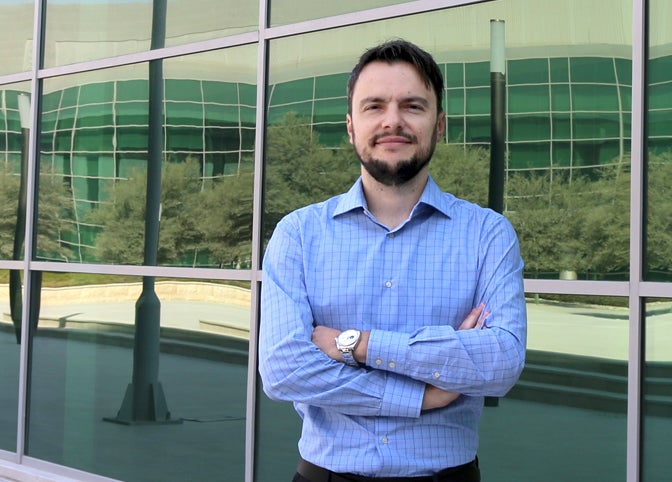A dust assessment module developed by Dr. Christos Fountoukis, senior scientist at Hamad Bin Khalifa University’s (HBKU) Qatar Environment and Energy Research Institute (QEERI), is now being used by researchers around the world after its inclusion in a leading air quality assessment modeling system, namely the Weather Research and Forecasting model coupled with Chemistry (WRF-Chem).

WRF-Chem, along with the Community Multiscale Air Quality Modeling System (CMAQ),are the top two weather and air pollution assessment computational systems that are being used widely in the USA and around the world for air quality regulatory purposes.
Systems such as WRF-Chem and CMAQ help researchers analyze air quality phenomena by simulating the emission, transport, mixing, and chemical transformation of trace gases and aerosols simultaneously with the meteorology. The WRF-Chem modeling system is used primarily for investigation of regional-scale air quality, field program analysis, and cloud-scale interactions between clouds and chemistry.
The module, which is called ISORROPIA (the Greek word for “equilibrium”), is an aerosol thermodynamic equilibrium model that calculates the partitioning of several semi-volatile aerosol species between gas and aerosol phase (either solid or liquid) by taking into account the formation of salts with major dust components such as calcium, potassium and magnesium.
In arid and semi-arid regions,a large part of atmospheric particles (“aerosols”) is comprised of crustal material from dust emissions. Other than dust, atmospheric aerosols are also composed of water, inorganic salts, organics, and trace metals. Knowledge of the chemical composition and physical state of atmospheric particles is particularly important for human health impact studies.
Dr. Fountoukis said: “I am very proud to have my module included in WRF-Chem. The new module has outperformed its competitors as it uniquely combines accuracy with computational efficiency. It does so by using a ‘smart’code approach that solves the same problem through multiple methods of different complexity and accuracy - with the code ’deciding‘ when to use a simplifying assumption (based on the atmospheric chemical environment in a specific computational cell).”
Researchers at QEERI use the new module to efficiently simulate the distribution of dust particles in the region, the variation of dust concentration with time in the atmosphere of Qatar and the forecasting of dust levels in the region on a daily basis. Coupled with QEERI’s comprehensive air quality measurements, which are conducted regularly across various locations in Doha, the module aims to help researchers gain better understanding of local and regional atmospheric conditions, which will help them identify efficient mitigation strategies towards a sustainable environment.





